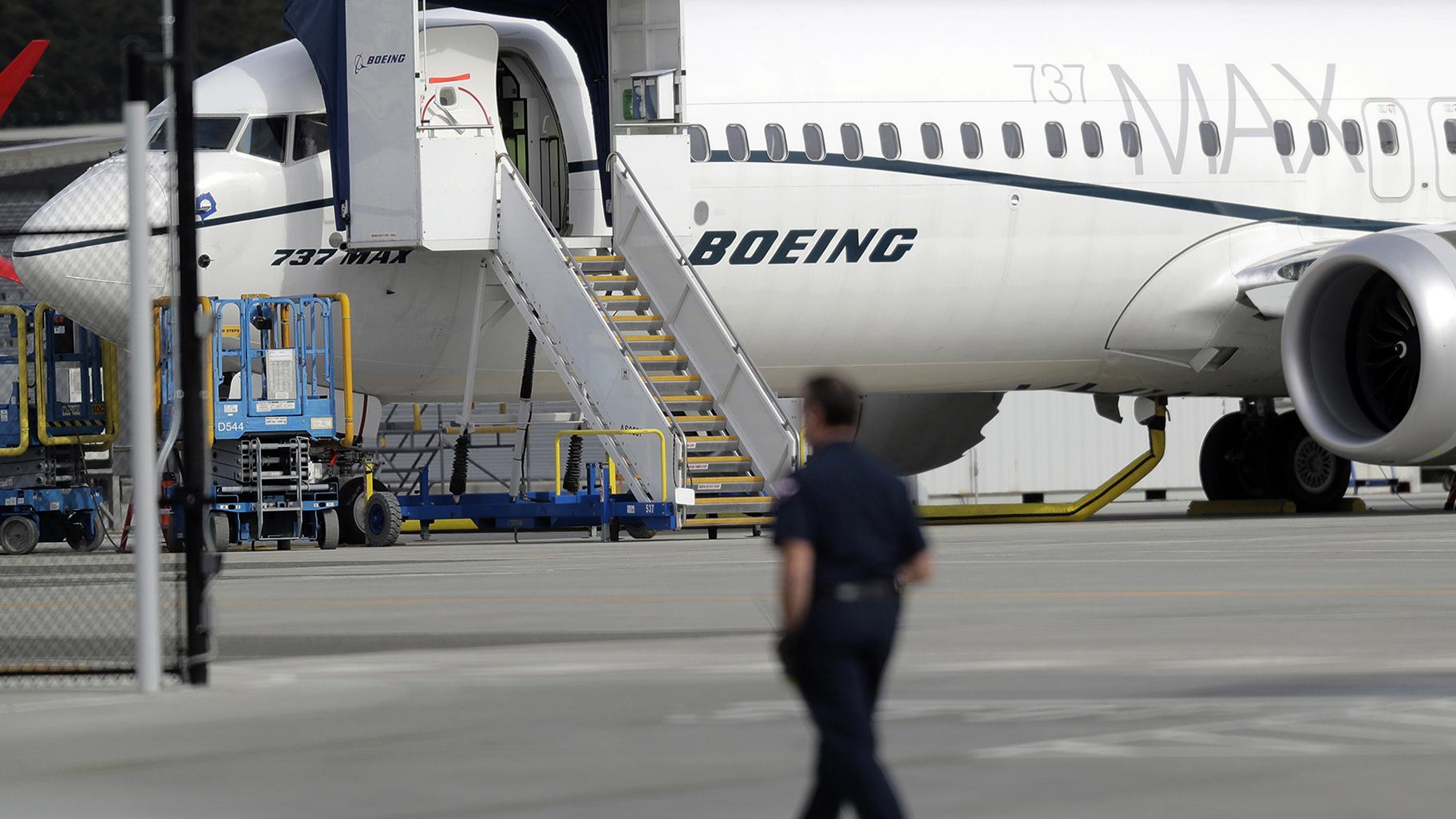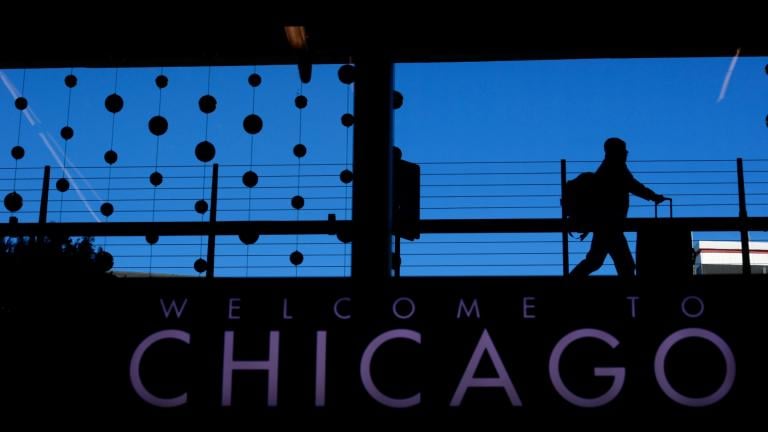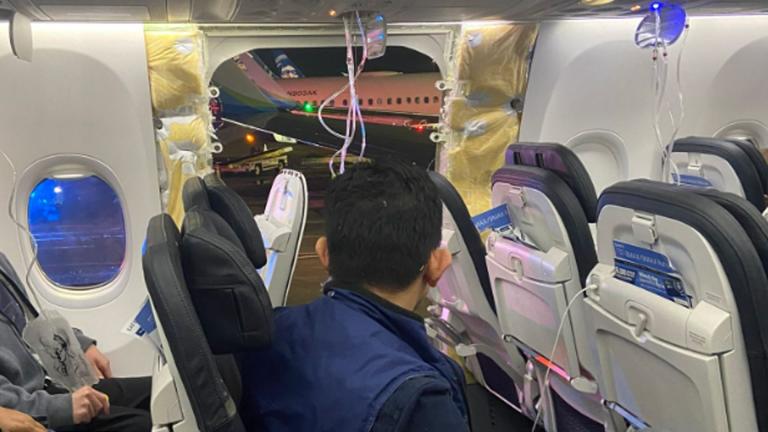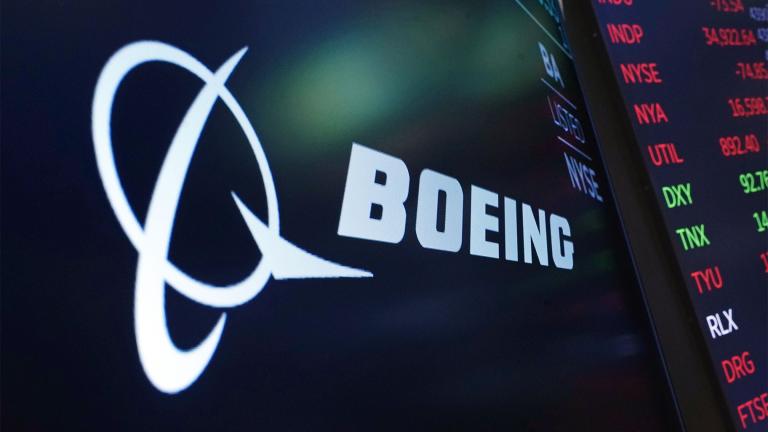 In this March 14, 2019, file photo a worker walks next to a Boeing 737 MAX 8 airplane parked at Boeing Field in Seattle. (AP Photo / Ted S. Warren, File)
In this March 14, 2019, file photo a worker walks next to a Boeing 737 MAX 8 airplane parked at Boeing Field in Seattle. (AP Photo / Ted S. Warren, File)
NEW YORK (AP) — A preliminary report released Thursday on the Ethiopian Airlines crash last month found that pilots followed all recommended procedures issued by Boeing, ratcheting up pressure on the plane maker that critics say has put profits before safety.
The findings from the Ethiopian government provide the clearest link yet to a similar crash involving the same Boeing model plane in the waters off Indonesia in October. All 346 on board the two flights died.
The report raises questions about whether Boeing did enough to alert pilots after the Indonesian crash and whether the Federal Aviation Administration should have grounded the 737 MAX planes earlier and not waited until the second crash on March 10.
Still, the report is only a first draft and raised some questions left unanswered, such as why the crew turned back on a faulty anti-stall system a half-minute before the plane slammed into the ground.
A final Ethiopian report with those details is not expected for months. The Indonesian final report could take until August or September and so attention will now likely turn to other government and regulatory probes.
A rundown of what we know so far about the crashes and what to expect next from ongoing investigations:
WHAT DID THE ETHIOPIAN REPORT FIND?
The Ethiopian government said a false reading from a key sensor on the side of the Boeing 737 Max set off a series of events that caused the pilots to lose control of the plane.
That is a significant discovery because faulty sensor readings are suspected behind the Lion Air 737 Max that crashed into the Java Sea on October 29. In that crash, investigators found a sensor activated an automated anti-stall system that repeatedly pushed the nose of the plane down.
The Ethiopian report also raises questions about assertions by Boeing and U.S. regulators since the Lion Air crash. They said that pilots could regain control in some emergencies by following steps that include turning off the anti-stall system, known by its acronym, MCAS.
The preliminary report appeared to contradict that. It said the Ethiopian Airlines crew turned off the system and followed other prescribed steps but still couldn't save the plane. The pilots did re-engage MCAS in the last seconds of the flight.
WHAT IS BOEING'S RESPONSE?
The airplane maker acknowledged in a statement that faulty data from the sensor triggered the MCAS system and vowed to make sure it doesn’t happen again.
“It’s our responsibility to eliminate this risk,” said CEO Dennis Muilenburg in a video address. “We own it and we know how to do it.”
Boeing said a software update in the works will add “additional layers of protection” and prevent bad data from activating the MCAS system. It also said it is will offer new training for Max pilots.
Investors in Boeing appeared to take Thursday’s report in stride. Its stock rose nearly 3 percent but fell nearly 1 percent on Friday.
WHAT'S NEXT?
Boeing is under investigation on multiple fronts.
The Justice Department is looking into possible criminal violations involving certification that the 737 Max introduced in 2017 was safe. Congressional committees are also investigating the crashes and questioning a program under which the FAA delegates many safety checks for planes to Boeing and other manufacturers to save money. A Senate committee will also look into whistleblower complaints about the training and credentials of federal inspectors who evaluated a Boeing jet involved in the two deadly crashes.
The Transportation Department inspector general is also probing the FAA to see why it was the last safety regulator in the world to ground the Boeing Max after the second crash.
The FAA, which must certify the 737 Max is safe before it can go back into the air, said in a statement that its own investigation into the crashes is still in its early stages.
“As we learn more about the accident and findings become available, we will take appropriate action,” the agency said.
WHAT ABOUT LAWSUITS?
Boeing is facing several suits from families of victims in the two crashes alleging the automated anti-stall system was defective and that plane maker failed to warn airlines about it or fully train pilots.
The latest, filed on the heels of the Ethiopian report on Thursday, was by a family of a 24 -year-old American on the Ethiopian Airlines flight.
“Blinded by its greed, Boeing haphazardly rushed the 737 MAX8 to market” and “actively concealed the nature of the automated system defects,” the lawsuit alleges, demonstrating a “conscious disregard for the lives of others.:
Other defendants in the suit include Ethiopian Airlines and Rosemount Aerospace, the sensor manufacturer.
Related stories:
Boeing, FAA Say More Time Needed for Fix of Troubled 737 Max
Aviation Officials Face Grilling Over 737 Max Crashes, Recall
AP Source: Justice Department Probing Development of Boeing Jets
FAA’s Close Ties to Boeing Questioned After 2 Deadly Crashes
US Grounding of Boeing Jet Shows Limits of Company’s Clout








